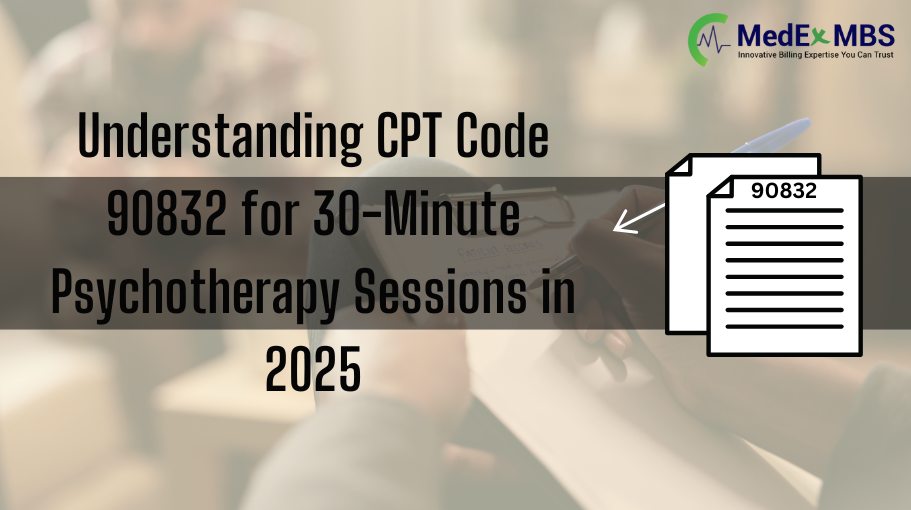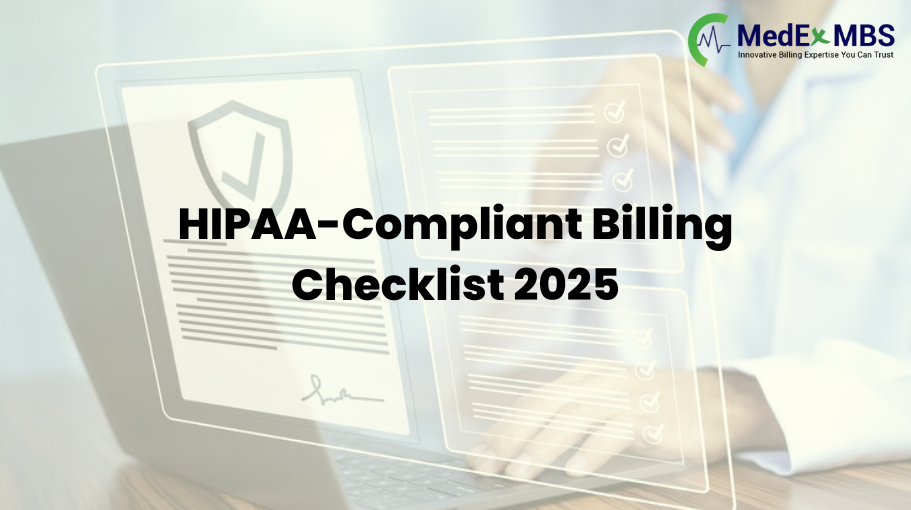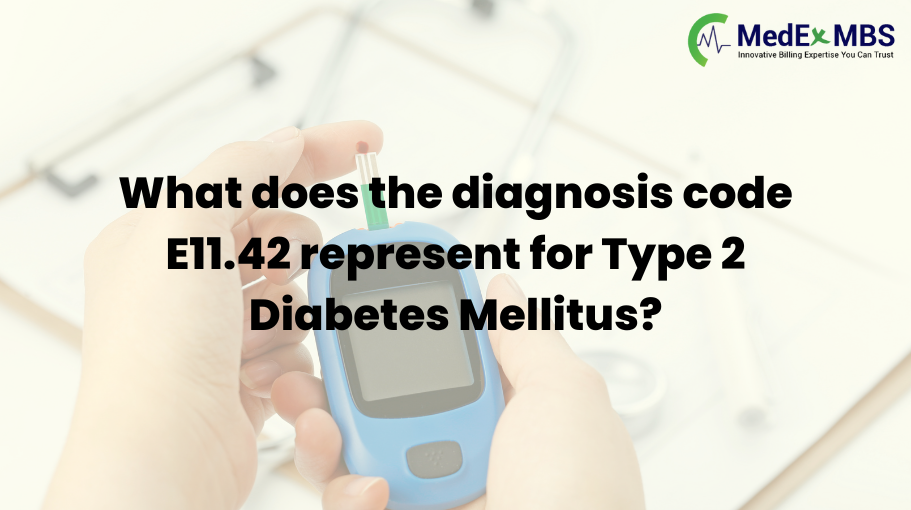GW Modifier Vs. GV Modifier in Hospice Care

Are you facing challenges in receiving payment for healthcare services rendered to hospice patients due to the improper application of GW or GV modifiers? Don’t be concerned, we are here to assist you! Grasping the significance of the GW Modifier and GV Modifier is crucial for accurate hospice billing and preventing claim rejections. In this guide, we will elucidate all the essential information regarding these two vital billing codes, the usage of GW versus GV Modifiers, and their impact on your claims. However, before delving into the details, let us briefly discuss the concept of hospice care and the importance of these modifiers. What is Hospice Care? Hospice care refers to specialized medical care aimed at supporting patients with terminal illnesses, such as those with incurable or irreversible conditions, by prioritizing comfort and quality of life. It encompasses the provision of medications, medical attention, and equipment to alleviate pain and minimize suffering during the final phases of life. Hospice services are provided by a dedicated team of physicians, nurses, and caregivers who ensure that patients and their families receive emotional, physical, and spiritual support. Typical hospice care services include pain management, symptom control, counseling, and round-the-clock assistance. The objective is to enable patients to live peacefully and comfortably during their remaining time, whether at home, in a hospice facility, or in another care setting. Hospice care is not focused on curing the illness but rather on enhancing the quality of life for both patients and their families. A hospice care team may comprise the following members: Clergy or other counselors Home health aides Hospice physician Nurse Practitioners Social workers Trained volunteers Speech, physical, and occupational therapists, if necessary The patient’s physician The team undertakes numerous responsibilities to assist and care for patients with terminal illnesses, including: Managing the patient’s pain and recognizing symptoms Offering emotional support Supplying medications, medical supplies, and equipment Educating caregivers on how to care for the patient Providing additional assistance, such as speech or physical therapy when necessary Facilitating short-term inpatient care when pain or symptoms escalate beyond manageable levels at home Offering grief support Where is Hospice Care Provided? Hospice care is offered in a variety of environments, such as hospitals, specialized hospice facilities, nursing homes, or the patient’s residence. A significant number of patients prefer the solace of receiving care in their own homes. Individuals who are enrolled in Medicare are eligible for hospice services if their physician assesses that they may have six months or less to live due to a terminal illness. This assessment is based on the patient’s medical history and overall health condition. Although it is difficult for physicians to accurately forecast life expectancy, patients who exceed the six-month mark can temporarily exit hospice care and re-enter later if their physician re-certifies their eligibility. Medicare beneficiaries have the option to transition from standard Medicare coverage to hospice care, which emphasizes symptom management and ensuring that patients are comfortable and treated with dignity during this period. When individuals on Medicare opt for hospice care, they can receive assistance with costs related to their illness through Medicare Part B. However, this does not include services provided by their primary doctor or nurse practitioner. Here are several requirements for the provision of hospice care services. They include: Patients (Medicare Beneficiaries) are required to opt for hospice care instead of standard Medicare benefits, and their terminal illness must be validated by both their attending physician and the medical director or a physician member of the IDG (Interdisciplinary Group). Nurse practitioners (NPs) serving as the attending physicians for the patient are not permitted to certify or recertify the terminal illness. Specific hospice care must be organized before the delivery of any services to terminally ill patients, and the care services must correspond with the established care plan. It is crucial to keep in mind that predictions regarding life expectancy are not always precise. Utilizing GV and GW Modifiers in Hospice Care Grasping the significance of GV and GW modifiers is vital for accurate hospice billing. These modifiers serve to clarify claims for services associated with a hospice patient’s care, thereby aiding in ensuring they are processed and reimbursed appropriately. Below is an overview of essential information regarding the application of GV and GW modifiers for hospice claims. Hospice Modifier GV The GV modifier for hospice claims is critical when billing Medicare for services rendered to hospice patients. This modifier is applicable when care services pertain to the patient’s terminal condition, yet the attending physician or nurse practitioner (NP) is not directly employed or compensated by the hospice agency. For example, if a physician delivers medical care to a hospice patient and is not associated with the hospice, but the services relate to the patient’s terminal illness, Medicare can still reimburse the physician. To guarantee proper reimbursement, the provider must incorporate the GV modifier on the claim when submitting it to Medicare. Key considerations when incorporating Modifier GV: Incorporating a GV modifier into claims will be advantageous for non-hospice physicians. The application of GV modifiers by hospice contractors is appropriate only if the patient qualifies for hospice care. Nevertheless, the attending physician must not be affiliated with the hospice as an employee. Hospice Modifier GW The GW Modifier plays a crucial role in billing Medicare for services rendered to hospice patients that are not related to their hospice care. This modifier is applicable when a patient eligible for hospice receives treatment for conditions that are not associated with their hospice diagnosis. For instance, if a patient in hospice care requires medical services for an unrelated issue, the healthcare provider must apply the GW Modifier when filing claims with Medicare. This specifically pertains to services delivered by physicians who are neither employed by nor compensated by the hospice. Essential points to remember regarding the GW Modifier: Apply the GW modifier to signify that the services rendered to a hospice patient are outside
Frequent HCPCS Coding Errors in Radiology Billing and Strategies to Prevent Them

Radiology practices frequently neglect to apply separate charges for essential items, including imaging supplies, contrast dye, and radioactive tracers, as their attention is primarily directed towards the main scans and diagnoses. When personnel fail to bill for these expensive materials, practices experience revenue loss and face the risk of compliance violations. A single mistake in billing for a radioactive tracer can result in costs exceeding $1,000 per study. With Medicare reimbursement rates projected to decrease by approximately 2.9% in 2025, these HCPCS challenges are increasingly significant for radiology professionals. This guide outlines prevalent HCPCS challenges and effective strategies to address them. Why is HCPCS Essential in Radiology Billing? CPT codes document the procedures performed, such as MRI scans, CT studies, or PET scans. In contrast, HCPCS codes account for the materials utilized, such as the $2,000 PET tracer, the $300 gadolinium injection, or specialized catheters. Failing to include these supply codes results in the expensive materials being treated as practice overhead rather than being compensated for. This issue is a common occurrence in radiology. Practices tend to concentrate on the high-cost imaging procedures while disregarding the costly materials that enable those procedures to be performed. The most frequent areas where practices incur revenue losses include: Contrast Agents Each type of contrast requires specific HCPCS codes that depend on its composition and delivery method. Gadolinium-based MRI contrast necessitates different codes compared to iodinated CT contrast. Utilizing generic codes instead of the specific agent codes leads to systematic underpayments. Radiopharmaceuticals PET imaging depends on costly tracers that come with intricate billing regulations. Some codes charge per study dose, irrespective of the millicuries used, while others charge per millicurie administered. This differentiation influences whether you bill for one unit or fifteen units for the same injection. Interventional Supplies Catheters, guidewires, and specialized devices employed during interventional procedures are often eligible for separate billing. Omitting these charges can convert profitable procedures into scenarios where the practice breaks even or incurs losses. Frequent HCPCS Coding Errors in Radiology Billing The following outlines the most common HCPCS errors encountered in radiology billing, along with their respective solutions. Incorrect Units for Radiopharmaceutical Billing Radiopharmaceutical codes adhere to distinct billing regulations that many practices misinterpret, resulting in considerable revenue loss. The Issue Certain codes bill “per study dose, while others bill “per millicurie. Code A9503 encompasses up to 30 millicuries but bills as a single unit, irrespective of the actual quantity utilized. Numerous practices mistakenly bill 15 units when administering 15 millicuries. The Resolution Educate staff to distinguish between “per study dose” and “per millicurie” descriptors. Develop quick reference cards that outline unit rules for frequently used radiopharmaceuticals. Insufficient Documentation for High-Cost Tracers Unlisted tracer codes necessitate comprehensive documentation that many practices neglect, leading to claim denials. The Issue Codes such as A9598 require documentation of the product name, NDC number, dosage, and invoice cost. The absence of any of these elements results in denials. Random audits demand invoice verification, and incomplete records necessitate the repayment of received funds. The Resolution Establish documentation templates for unlisted codes. Mandate the inclusion of invoice copies and complete product information before billing any NOC radiopharmaceutical codes. Billing for Contrast When It Is Already Included Payer bundling regulations differ significantly, confusing regarding when contrast can be billed separately. The Issue Certain payers bundle MRI contrast into procedure payments. Billing it separately breaches contracts and initiates compliance reviews. Each payer has varying bundling rules that are subject to change quarterly. The Resolution Keep up-to-date bundling reference guides for major payers. Review payer updates every quarter and modify billing protocols accordingly for each contract. Insufficient Contrast Documentation Details Inadequate contrast documentation hinders accurate HCPCS coding and leads to systematic revenue loss. The Issue The type and quantity of contrast must be recorded in the technique section prior to the addition of supply codes. Incomplete information regarding specific contrast agents, volumes given, or methods of delivery hinders precise HCPCS code selection and reimbursement. The Resolution Mandate that technologists record the precise type of contrast, volume, and method of administration. Develop standardized templates for documenting contrast in imaging reports. Prior Authorization Shortcomings for High-Cost Agents High-priced radiopharmaceuticals and contrast agents frequently necessitate prior authorization, which practices often neglect to secure. The Issue Advanced PET tracers, which cost between $3,000 and $5,000, require pre-approval before administration. The absence of authorization results in automatic denials, irrespective of medical necessity. Emergency studies exacerbate this issue when time constraints prevent authorization requests. The Resolution Establish pre-authorization tracking systems for high-cost agents. Confirm coverage before scheduling and maintain databases for authorizations with tracking for expiration. Billing System Mapping Mistakes Chargemaster systems frequently misclassify procedures under incorrect HCPCS codes, leading to systematic billing inaccuracies. The Issue Technical personnel document bilateral imaging on charge tickets, yet billing systems assign unilateral procedure codes. Therapeutic infusions are incorrectly categorized under hydration codes. These mapping inaccuracies result in consistent underbilling across numerous claims. The Resolution Perform quarterly audits of the chargemaster with both clinical and billing personnel. Cross-verify charge ticket descriptions against the actual HCPCS codes in your billing system. When discrepancies are identified, promptly update mappings and utilize test claims to validate corrections before implementation. Volume Calculation Errors Inaccurate dosage calculations result in incorrect unit billing and substantial revenue discrepancies. The Issue Per-milliliter codes necessitate accurate volume calculations. Billing practices that charge per vial rather than the actual milliliters administered overlook potential revenue. Additionally, the requirements for waste documentation further complicate the precise determination of units for costly agents. The Resolution Educate staff on the differences between per-unit and per-volume billing. Establish protocols for verifying dose calculations. Ensure proper documentation of waste for high-cost radiopharmaceuticals. Incomplete Invoice Records for Audits The absence of invoice documentation poses a risk during payer audits and
Understanding CPT Code 90832 for 30-Minute Psychotherapy Sessions in 2025

CPT Code 90832 serves as a specialized billing tool for mental health practitioners conducting brief therapeutic sessions. However, many providers are unsure about its correct application and its diminishing significance in contemporary practice. Although longer psychotherapy sessions are prevalent, it is crucial to comprehend when and how to utilize code 90832 for effective billing practices. This comprehensive guide provides mental health professionals with all necessary information regarding CPT Code 90832, including fundamental requirements and reimbursement rates for 2025, thereby facilitating accurate billing and maximizing revenue for 30-minute therapy sessions. Quick Facts CPT Code 90832 is designated for billing 30-minute individual psychotherapy sessions (16-37 minutes) In 2025, the reimbursement rate for 90832 under Medicare is set at $75.52 for each session. Only licensed mental health professionals are authorized to bill this code for individual therapy Sessions shorter than 16 minutes cannot be billed using CPT Code 90832 This code is increasingly infrequently utilized as providers favor longer session formats Accurate documentation and timing are critical for proper billing and reimbursement What is CPT Code 90832? CPT Code 90832, created by the American Medical Association (AMA) as part of the current procedural terminology system, pertains to individual psychotherapy sessions that last approximately 30 minutes. This specific psychotherapy code mandates that sessions last between 16-37 minutes of direct therapeutic interaction between licensed mental health providers and their patients. The code is categorized under mental health CPT codes and is one of several psychotherapy codes available for billing individual therapy services. Unlike other CPT codes utilized for psychiatric diagnostic assessments or medication management, 90832 is solely dedicated to therapeutic interventions conducted during focused sessions. Key Requirements for CPT Code 90832 Time Range: Sessions are required to have a duration of 16 to 37 minutes to qualify. Service Type: Individual psychotherapy only does not include group therapy, family therapy, or couples therapy Provider Requirements: Must be conducted by licensed mental health professionals Documentation: Demands detailed session notes that validate the medical services provided. Patient Present: All billable time must include direct interaction with the patient The CPT manual characterizes this code as significantly shorter than the more frequently utilized 90834 (38-52 minutes) or 90837 (53+ minutes), rendering it appropriate for particular clinical circumstances that necessitate shorter interventions. When to Use CPT Code 90832 Mental health providers should contemplate billing CPT code 90832 in various specific situations where shorter sessions correspond with clinical requirements and treatment strategies: Appropriate Use Cases Individual therapy sessions lasting 16-37 minutes with documented therapeutic content Routine outpatient psychotherapy appointments for patients who benefit from concentrated sessions Brief therapeutic interventions targeting specific symptoms or behavioral objectives Teletherapy sessions conducted through approved telehealth platforms within the designated time frame Follow-up sessions that do not necessitate the full extent of longer psychotherapy sessions Crisis intervention when brief, focused support is clinically suitable Clinical Scenarios Favoring Shorter Sessions Most providers observe that certain patient demographics respond more favorably to focused sessions. Children and adolescents frequently exhibit shorter attention spans, making 30-minute sessions more effective. Likewise, patients with anxiety disorders may initially manage shorter sessions more effectively before advancing to longer formats. Certain treatment plans explicitly require brief interventions, especially when addressing specific behavioral modifications or when offering supportive therapy during stable phases of care. When NOT to Utilize CPT Code 90832 Understanding the circumstances under which code 90832 should not be employed helps to avert billing mistakes and guarantees the correct selection of codes for various mental health services: Inappropriate Uses Sessions exceeding 37 minutes: Instead, utilize CPT 90834 (38-52 minutes) or 90837 (53+ minutes) Group therapy sessions: For group psychotherapy services, apply CPT 90853 Family or couples therapy: For family psychotherapy or family counseling, use CPT 90846 or 90847 Psychiatric evaluations: For diagnostic evaluation services, employ CPT 90791 or 90792 Medication management visits: Appropriate E/M codes should be used instead of psychotherapy codes Documentation Requirements for Exclusions Providers must document the actual time spent when sessions fall outside the 16-37 minute range to substantiate the correct code selection. Accurate time tracking is essential in the billing process to prevent claim denials and ensure adherence to coding guidelines. Reimbursement Considerations The reimbursement rates indicate that 90832 compensates approximately 75% of the rates for 90834 and 50% of the rates for 90837, reflecting the reduced time commitment. A majority of providers favor longer sessions utilizing 90834 or 90837 as they yield better revenue per session and facilitate more thorough therapeutic engagement. Session Timing Documentation Precise documentation of the start and end times of sessions is crucial for justifying code selection. The billing personnel must confirm that the time spent aligns with the appropriate range for each code to prevent billing inaccuracies. License Requirements and Billing Eligibility Only certain categories of licensed mental health professionals are authorized to bill CPT Code 90832, and the credentialing criteria differ based on payer and location: Eligible Provider Types Psychiatrists (MD/DO): Authorized to bill for all psychotherapy services Clinical psychologists (PhD/PsyD): Licensed to offer and bill for individual psychotherapy Licensed clinical social worker (LCSW): Eligible for independent billing practices Licensed professional counselors (LPC): Permitted to bill when appropriately credentialed Marriage and family therapists (MFT): Authorized for billing individual therapy Nurse practitioners (in certain states): May bill with the necessary mental health credentials Pre-Licensed Provider Considerations Pre-licensed mental health professionals are permitted to bill code 90832 under supervision, contingent upon specific documentation and modifiers. The supervising licensed provider must be credentialed with the insurance plan, and supervision requirements differ according to state regulations. Credentialing Requirements Prior to billing any CPT codes, providers are required to complete insurance credentialing with each payer. This encompasses Medicare provider enrollment for those attending to Medicare patients and distinct Medicaid enrollment for state programs. Add-On Codes and Combinations CPT 90832 can be used in conjunction with specific add-on codes when there is clinical
HIPAA-Compliant Billing Checklist 2025

The complexity of HIPAA-compliant billing has increased significantly. In 2024, healthcare data breaches affected over 133 million records, and enforcement fines consistently exceeded $1 million for each violation. Healthcare organizations are encountering serious risks in this environment. The situation became even more complicated in 2025 when the Department of Health and Human Services (HHS) introduced the first significant update to the Security Rule since 2013. This update includes mandatory multi-factor authentication, encryption requirements, and much stricter oversight of vendors. For those managing a billing department, this means navigating evolving regulations while ensuring smooth operations and the protection of patient data. Regardless of whether you operate a small practice or a large healthcare provider, understanding these changes is crucial to avoid costly penalties and maintain patient trust. How Does HIPAA Influence Medical Billing? Let us begin with the fundamentals. It is essential to understand who is affected by HIPAA and how billing is integrated into these regulatory requirements. Who Must Comply with These Regulations Covered Entities: This includes healthcare providers, health plans, and clearinghouses that manage electronic health transactions. Business Associates: These are vendors and consultants who handle protected health information (PHI). The Three Primary Rules That Affect Billing Privacy Rule: Governs the usage, sharing, and disclosure of patient billing information. Breach Notification Rule: Outlines the procedures for reporting data breaches related to billing records and specifies the timing for such notifications. These regulations work in concert to ensure the security of patient data throughout the entire HIPAA-compliant billing process, from claim submission to payment processing. New HIPAA Compliance Obligations for 2025 The regulatory landscape has undergone significant changes this year. Significant Modifications to Security Regulations (January 2025) Mandatory Multi-Factor Authentication: Now a requirement for accessing the billing system Required Encryption: Both stored and in-transit data must be safeguarded Annual Penetration Testing: Yearly security assessments and biannual vulnerability scans are necessary 24-Hour Vendor Notifications: Business partners must inform you within a day if an issue arises Stricter Enforcement OCR investigations increased by 264% following the ransomware incidents of 2024 More severe penalties if patients experience delays in obtaining their billing records New 6-year mandate for retaining all compliance documentation These modifications have shifted the guidance from “you should probably do this” to “you absolutely must do this.” Proactively addressing these changes is essential to avoid penalties. 10-Point HIPAA-Compliant Billing Checklist for 2025 Conduct a Comprehensive Risk Assessment and Map Your Systems Begin with an exhaustive Security Risk Analysis that specifically targets your HIPAA-compliant billing systems. Document every piece of technology that interacts with electronic protected health information (ePHI) – including practice management systems, clearinghouses, vendor platforms, and more. Create a detailed map illustrating the flow of patient information throughout your billing process, from initial registration to the receipt of the final payment. It is advisable to update this map annually or whenever you introduce new billing software, alter your procedures, or engage new vendors. Your documentation should address the likelihood of various threats, the vulnerabilities identified, and the specific strategies you employed to mitigate each risk. Establish Multi-Factor Authentication (No Exceptions) The upcoming changes to the 2025 Security Rule make it abundantly clear: multi-factor authentication is no longer optional. Anyone accessing billing systems containing ePHI is required to implement it. Deploy it throughout the HIPAA-compliant billing infrastructure: Practice management systems Electronic health record platforms Clearinghouse portals Vendor billing applications Email systems that manage PHI Ensure that individuals are required to verify their identity through at least two methods (password plus phone or app verification). Your MFA system must integrate seamlessly with the existing workflows of your billing team – security measures should not hinder productivity. Encrypt All Data All ePHI within HIPAA-compliant billing must be encrypted, whether it resides on your servers or is transmitted between systems. This includes data stored on servers, laptops, mobile devices, and backup systems, as well as any information exchanged between systems, vendors, and clearinghouses. Verify that your billing software, practice management system, and third-party applications utilize robust encryption (AES-256 at a minimum). The 2025 regulations mandate encryption as a necessity, rather than a luxury. Regulate Access to Information (And Terminate It Promptly) Implement stringent controls so that your HIPAA-compliant billing team can only access the PHI necessary for their specific roles. Establish various user categories such as: Claims processors (limited to claim preparation and submission) Payment posters (focused on payment and adjustment tasks) Billing managers (granted full access along with audit capabilities) Crucially, you must have procedures in place to revoke access within one hour when an employee departs or changes positions. This swift termination of access is a significant aspect of the proposed 2025 updates and prevents unauthorized individuals from accessing sensitive billing information. Develop Your Emergency Response Strategy and Vendor Notification System Formulate a strategy specifically addressing HIPAA-compliant billing security issues, system breaches, ransomware incidents, and unauthorized access to PHI. Your strategy must delineate clear responsibilities, notification timelines, and recovery procedures. Revise every Business Associate Agreement to ensure that vendors are obligated to inform you within 24 hours if they activate their emergency protocols. Organize Your Security Assessments The proposed 2025 Security Rule mandates regular assessments that extend beyond basic risk evaluations. Ensure that a thorough penetration test of your HIPAA-compliant billing systems is conducted annually by certified security professionals. Additionally, perform vulnerability scans biannually to identify potential weaknesses within your network. Document all findings and the corrective actions taken. These records demonstrate your proactive management of security when regulators conduct inquiries. Monitor Everything and Conduct Regular Reviews Enable comprehensive logging across all HIPAA-compliant billing systems to monitor who accesses PHI, the timing of such access, and the actions taken. Your logs should include: Attempts to log in and access patterns Modifications to PHI and adjustments to claims Changes to system settings Unsuccessful access attempts and security notifications Review these logs monthly for any irregularities and perform formal compliance evaluations at least once a year. These assessments ought
What does the diagnosis code E11.42 represent for Type 2 Diabetes Mellitus?

The E11.42 code relates to type 2 diabetes mellitus that is associated with diabetic polyneuropathy as defined in the ICD-10 classification. What you will learn here: The E11.42 code specifically designates type 2 diabetes mellitus accompanied by diabetic polyneuropathy, thereby guaranteeing accuracy in both treatment and documentation. Symptoms associated with diabetic polyneuropathy encompass numbness and pain in the extremities, necessitating diagnostic procedures such as nerve conduction velocity tests. Managing the E11.42 code requires a comprehensive approach that includes medication, lifestyle modifications, and possibly insulin to achieve optimal patient outcomes. What is the E11.42 Code? The E11.42 code is a component of the ICD-10 classification system, utilized to identify type 2 diabetes mellitus with diabetic polyneuropathy. This condition signifies nerve damage resulting from diabetes, which can manifest in various symptoms. The E11.42 code serves not merely as an identifier but as a designation for a specific condition that demands targeted treatment and management. By accurately identifying this complication within the broader context of diabetes-related issues, the E11.42 code guarantees that patients receive appropriate care. It also facilitates precise documentation, which is vital for treatment planning and insurance reimbursement. Definition and Classification The E11.42 code is categorized within the ICD-10-CM classification system, a global standard for diagnosing and coding diseases and conditions. More specifically, it falls under the E08-E13 category, which encompasses various forms of diabetes mellitus. Understanding this classification system is essential for recognizing the type of diabetes mellitus and its associated complications, particularly diabetic polyneuropathy. In the ICD-10-CM, the E11.42 code is classified under endocrine, nutritional, and metabolic diseases, making it pertinent to metabolic disorders. This specific classification of diseases ensures that healthcare providers can accurately diagnose and treat patients, highlighting the importance of maintaining clear and detailed medical records. The Significance of Documentation Accurate documentation is essential for effective healthcare. The identification of type 2 diabetes mellitus accompanied by diabetic polyneuropathy requires a blend of physical assessments and specific diagnostic tests. Inadequate or erroneous documentation may result in improper billing, mismanagement of treatment strategies, and denial of claims. The E11.42 code must be applied with a high degree of specificity to the patient’s condition. This entails a clear definition of terms such as ‘uncontrolled’ diabetes and the establishment of the connection between diabetes and its complications. Such meticulous documentation guarantees that patients receive appropriate care and that providers can substantiate the medical necessity of treatments for insurance purposes. Symptoms and Diagnosis of Type 2 Diabetes Mellitus with Diabetic Polyneuropathy Type 2 diabetes mellitus with diabetic polyneuropathy is a condition characterized by various symptoms that significantly impact patients’ daily lives. Understanding these symptoms and the diagnostic processes is vital for effective management. Common Symptoms The prevalent symptoms of type 2 diabetes mellitus with diabetic polyneuropathy include numbness, tingling, and pain in the extremities. These symptoms arise from nerve damage and can greatly hinder a patient’s capacity to perform daily activities. Diabetic autonomic neuropathy may lead to gastrointestinal issues, bladder dysfunction, and cardiovascular irregularities. In severe instances, these symptoms can escalate to exercise intolerance, resting tachycardia, and other complications affecting multiple organ systems. Early recognition of these symptoms can facilitate timely intervention and management, thereby enhancing patients’ quality of life. Diagnostic Procedures The identification of type 2 diabetes mellitus accompanied by diabetic polyneuropathy requires a blend of physical assessments and specific diagnostic tests. Physical examinations include reflex tests aimed at assessing neurological function and identifying any abnormalities. One of the primary diagnostic tools is the assessment of nerve conduction velocity, which evaluates the speed and strength of signals transmitted through the nerves. These assessments are crucial for determining the degree of nerve damage and for accurately confirming the presence of diabetic polyneuropathy, thereby facilitating precise coding with E11.42. Treatment Options for Patients with E11.42 Code Managing type 2 diabetes mellitus accompanied by diabetic polyneuropathy necessitates a comprehensive approach. Treatment alternatives encompass medications, lifestyle modifications, and advanced therapies, all of which play a significant role in alleviating symptoms and enhancing patient outcomes. Medications typically serve as the initial line of defense against the pain and discomfort associated with diabetic polyneuropathy. Pregabalin and duloxetine are the only FDA-approved medications specifically for painful diabetic polyneuropathy. These drugs, along with alternatives such as gabapentin and amitriptyline, are effective in managing neuropathic pain. Antidepressants like duloxetine can also be beneficial for patients without depression, underscoring the versatility of these medications. They are essential for enhancing the quality of life for individuals suffering from chronic pain and discomfort. Lifestyle Changes Lifestyle modifications are crucial in managing type 2 diabetes and its associated complications. A well-balanced diet that includes vegetables, fruits, and whole grains can assist in maintaining stable blood sugar levels and minimizing the risk of additional complications. Engaging in regular physical activity is equally important. A minimum of 150 minutes of moderate exercise each week can enhance overall health, improve insulin sensitivity, and facilitate better management of diabetic polyneuropathy symptoms. Implementing these lifestyle changes can significantly impact a patient’s well-being and their ability to control diabetes. Advanced Therapies For certain patients, advanced therapies such as insulin therapy may be essential, particularly when oral medications alone fail to control blood sugar levels. Insulin therapy is instrumental in achieving optimal blood glucose regulation, which is vital for preventing additional complications and managing diabetic polyneuropathy. Tailored treatment plans incorporating insulin therapy can significantly enhance patient outcomes and offer a more holistic approach to managing type 2 diabetes alongside diabetic polyneuropathy. Complications of Type 2 Diabetes and Diabetic Polyneuropathy Type 2 diabetes accompanied by diabetic polyneuropathy can result in numerous complications, each of which must be addressed to ensure the best possible outcomes for patients. These complications can generally be classified into neurological, vascular, and other specified categories. Diabetic Neurological Complications Diabetic neuropathy, a prevalent complication linked to diabetes, entails considerable nerve damage that may present as pain, tingling sensations, and
